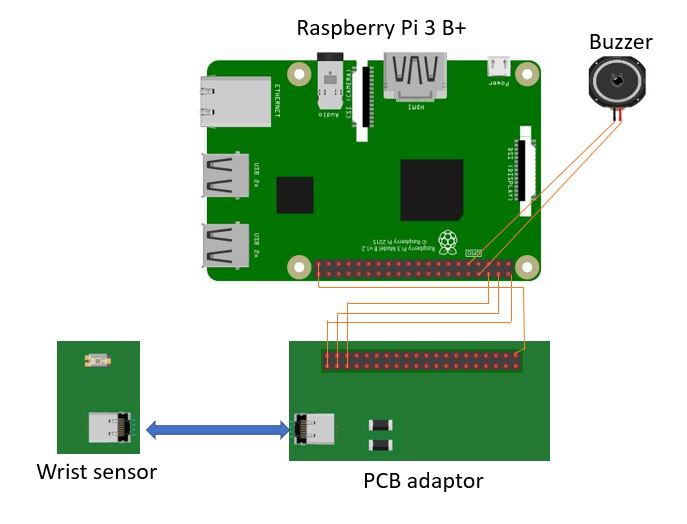-
1Hardware setting
To deploy and starts working with this device, you need to follow some steps.
- Connect PCB adaptor with Wrist sensor by RJ45 cable
- Connect PCB adaptor pins with Raspberry Pi pins as shown in below table
-
2Software setting
To build our program in your Pi, you need to follow some steps.
sudo apt-get update git clone https://github.com/GGChe/Stress_Controller_DeviceYou would need to update and install the libraries of PHP5.6, Apache2 and compilers if your are working on a vanilla version of the OS.
sudo apt-get install php5.6 sudo apt-get install apache2 sudo apt-get install g++To compile the whole code, you only need to go to the code's folder and type on the terminal
cmake . make sudo ./StressC.outTo run the program from the boot of the system
sudo nano /etc/rc.localAnd then, write before "exit 0" the following scrypt:
sudo ./PATH/StressC.out* We developed a driver for the VEML6030 sensor, that uses I2C communication protocol, using the data obtained from the link below. The driver given in that project was initially prepared for Arduino but we had to modify it completely to make it run in every system using a proper c++ code
Reference : https://os.mbed.com/teams/MSS/code/VEML6030/
Free Stress Gaming
Our team provides an open-source real-time embedded project to monitor the stress level of a video game player.
 Daewon Jung
Daewon Jung


Discussions
Become a Hackaday.io Member
Create an account to leave a comment. Already have an account? Log In.